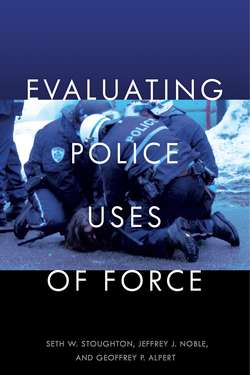Читать книгу Evaluating Police Uses of Force - Seth W. Stoughton - Страница 17
На сайте Литреса книга снята с продажи.
How Does the Constitutional Standard Apply?
ОглавлениеIn Graham v. Connor, the Supreme Court held that because the Fourth Amendment prohibits unreasonable seizures, the ultimate question in use-of-force cases is whether the officer’s actions were “objectively reasonable” under the circumstances. That analysis requires, the Court said, “a careful balancing of the nature and quality of the intrusion on the individual’s . . . interests against the countervailing governmental interests at stake.” And that balancing, in turn, requires “careful attention to the facts and circumstances of each particular case.” To guide the constitutional analysis, the Court set out three factors that are widely known as the “Graham factors.” First, the severity of the crime at issue must be considered. Second, the immediate threat to officers and others posed by the subject must be evaluated. Third, whether the subject is actively resisting or attempting to evade arrest by fleeing must be taken into account. The Court added additional factors by recognizing the importance of the proportionality of the force used and the totality of circumstances. These considerations make the analysis of objective reasonableness more complicated by requiring the analyst to consider aleatory elements of the use of force. As the forgoing suggests, use-of-force investigations are “highly fact-intensive.”17
To navigate the constitutional use-of-force analysis, this section offers an analytical roadmap broken down into the following three elements: (1) deference and the “reasonable officer,” (2) governmental interests, and (3) proportionality. At each step, our roadmap addresses the three major tenants of the Graham decision, but where most accounts take the three Graham factors at face value, we illustrate how they are more properly viewed as three categories, each of which contains a number of subsidiary factors that can influence how any given use-of-force incident is analyzed. We also go beyond Graham, demonstrating that the factors that fit within the Graham categories are not the only relevant considerations. Graham itself suggests that the three identified categories were not intended to be exhaustive; they are “include[ed]” in “the facts and circumstances of each particular case” that evaluators must review, but they are hardly the only relevant factors to consider when determining whether a use of force was reasonable.
Fully analyzing a use-of-force incident under the constitutional standard, then, requires understanding and applying the full extent of the Graham factors as well as understanding what else in the totality of the circumstances can affect the conclusion. Graham and subsequent decisions have offered, at best, a partial view of the analytical process that should be applied to use-of-force incidents. Each case analyzed by the courts applies relevant portions of the test, emphasizing some factors over others and omitting some considerations entirely. This is as it should be; the facts of each case are unique, and a recitation of irrelevant considerations would be unnecessary. But while the fragmented application of the rules is appropriate when reviewing the specific facts of an individual case, we seek here to provide a more global perspective.
